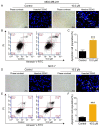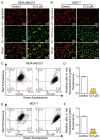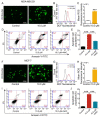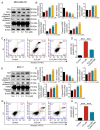Synthesis, In Vitro, and In Vivo Investigations of Pterostilbene-Tethered Analogues as Anti-Breast Cancer Candidates
- PMID: 37511230
- PMCID: PMC10380385
- DOI: 10.3390/ijms241411468
Synthesis, In Vitro, and In Vivo Investigations of Pterostilbene-Tethered Analogues as Anti-Breast Cancer Candidates
Abstract
Pterostilbene has been found to be an active scaffold with anti-breast cancer (BC) action. In this study, fourteen pterostilbene-tethered analogues (2A-2N) were prepared and screened in vitro against MDA-MB-231 and MCF-7 cells. Meanwhile, their structures were characterized using 1H-NMR, 13C-NMR, and HRMS (ESI) spectroscopy techniques. Among them, analogue 2L displayed the most potent anti-proliferation effect on MDA-MB-231 (IC50 = 10.39 μM) and MCF-7 cells (IC50 = 11.73 μM). Furthermore, the meaningful structure-activity relationships suggested that the introduction of a saturated six-membered nitrogen heterocyclic ring into the side chain favored anti-BC capacity. Biological observations indicated that 2L could cause the typical morphological changes in apoptosis, namely an increase in reactive oxygen species level and a loss of mitochondrial membrane potential in BC cells. Importantly, 2L could induce mitochondrial-mediated apoptosis by regulating the expression of caspase-related proteins. Consistent with the results of our in vitro study, 2L apparently inhibited tumor growth in MDA-MB-231 xenograft mice without obvious toxicity. These findings revealed that 2L is expected to be a promising anti-BC lead compound that merits further investigations.
Keywords: anti-BC activity; mitochondrial apoptosis; pterostilbene; synthesis.
Conflict of interest statement
The authors declare no conflict of interest.
Figures









Similar articles
-
Pterostilbene induces mitochondrially derived apoptosis in breast cancer cells in vitro.J Surg Res. 2013 Apr;180(2):208-15. doi: 10.1016/j.jss.2012.04.027. Epub 2012 Apr 29. J Surg Res. 2013. PMID: 22572619
-
In-vitro Evaluation of Isatin Derivatives as Potent Anti-Breast Cancer Agents against MCF-7, MDA MB 231, MDA-MB 435 and MDA-MB 468 Breast Cancers Cell Lines: A Review.Anticancer Agents Med Chem. 2022;22(10):1883-1896. doi: 10.2174/1871520621666210903130152. Anticancer Agents Med Chem. 2022. PMID: 34477529 Review.
-
Antitumor activity of phenethyl isothiocyanate in HER2-positive breast cancer models.BMC Med. 2012 Jul 24;10:80. doi: 10.1186/1741-7015-10-80. BMC Med. 2012. PMID: 22824293 Free PMC article.
-
Estrogen receptor-α36 is involved in pterostilbene-induced apoptosis and anti-proliferation in in vitro and in vivo breast cancer.PLoS One. 2014 Aug 15;9(8):e104459. doi: 10.1371/journal.pone.0104459. eCollection 2014. PLoS One. 2014. PMID: 25127034 Free PMC article.
-
Pterostilbene: Mechanisms of its action as oncostatic agent in cell models and in vivo studies.Pharmacol Res. 2019 Jul;145:104265. doi: 10.1016/j.phrs.2019.104265. Epub 2019 May 9. Pharmacol Res. 2019. PMID: 31078746 Review.
References
MeSH terms
Substances
Grants and funding
LinkOut - more resources
Full Text Sources
Medical
Miscellaneous

